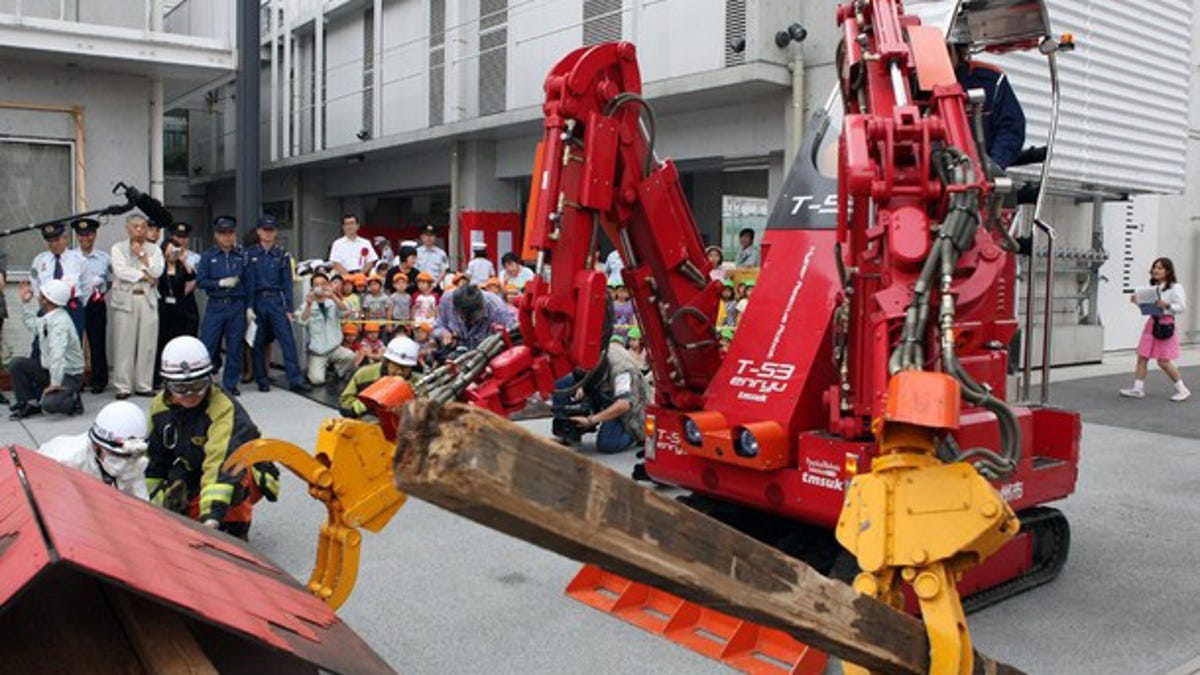Enryu rescue robot gets Fukushima mission
A rescue robot called Enryu is being deployed to the Fukushima nuclear plant. It will be the first Japanese robot to help move rubble.

The T-53 Enryu can hoist about 440 pounds.
TOKYO--Japan's robotics response to the disaster at the Fukushima Daiichi nuclear plant has been disappointing so far, but a 5-ton rescue robot developed after the 1995 Kobe earthquake may see some action at the facility soon.
Created by Fukuoka-based Tmsuk in 2007, the T-53 Enryu (PDF) is a hulking, 9-foot-tall machine on treads with a bulldozer attachment and giant arms to move debris.
Enryu (or "Rescue Dragon") is expected to clear highly radioactive rubble at the plant to provide machines and people better access, but it may need to be shielded with lead to protect it from radiation. It would be the second Japanese robot on the scene following a radiation detector robot, which apparently hasn't been used much.
Each of Enryu's arms has six joints and can hoist about 220 pounds. The machine can be operated directly from the cab or remotely via suitcase-portable hardware, for which it has seven cameras.
A lighter, more compact version of its predecessor T-52, the T-53 helped in recovery efforts after the 2007 earthquake that hit Kashiwazaki City in Niigata, home to the world's largest nuclear power plant by capacity.
Despite that experience, Tmsuk has only recently sent the T-53 to a holding center in Tsukuba, Ibaraki Prefecture, north of Tokyo, following a request from the Ministry of Economy, Trade, and Industry. Remote-controlled robot loaders from Qinetiq North America are also undergoing evaluation at the center.
The robots will next be sent to J-Village, a site near the Fukushima plant where machines are decontaminated following exposure to radiation. Two iRobot PackBots, often used by the U.S. military, have already been used to explore and image the interior of reactor buildings.
Here's some video of the T-53 at a demo. It won't have the stirring music at Fukushima.
(Via Kyodo News)

